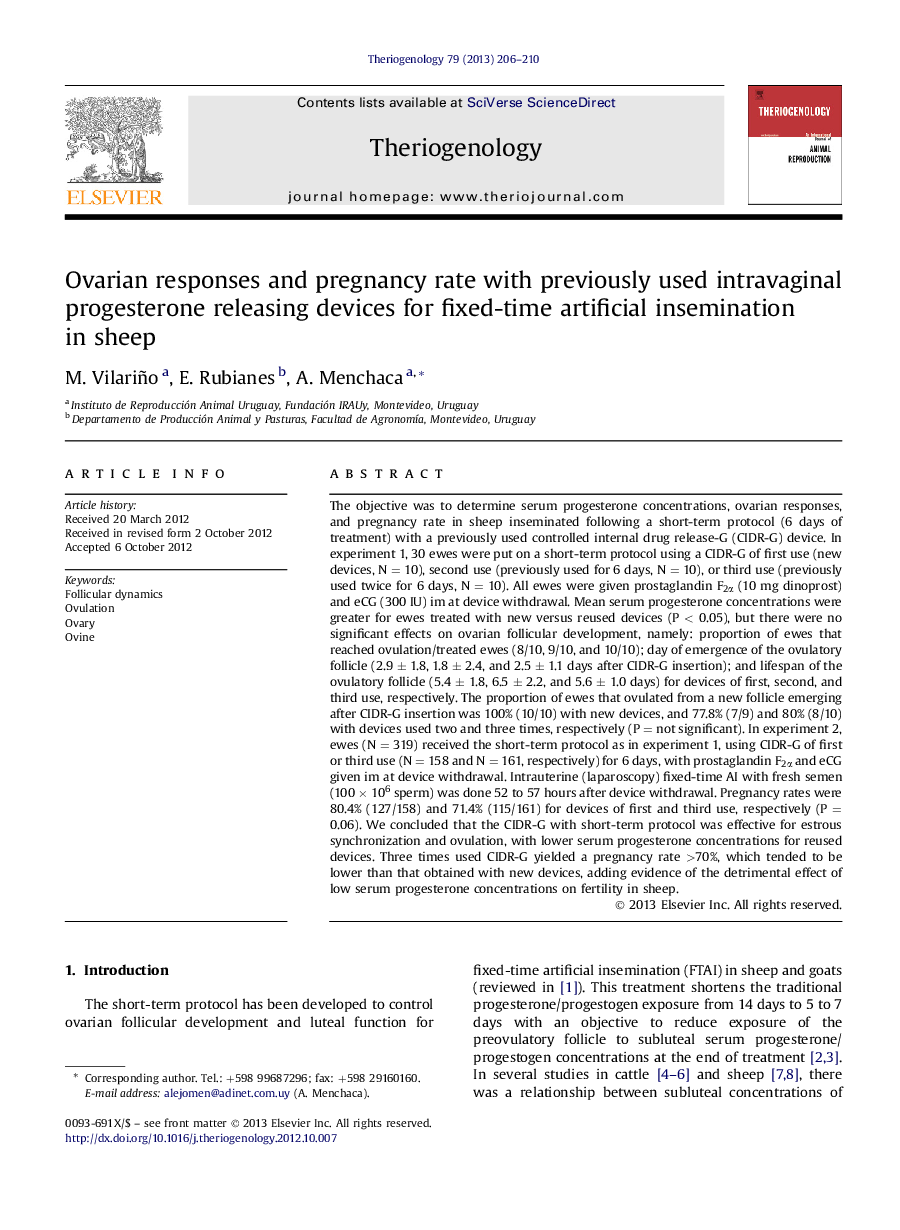| Article ID | Journal | Published Year | Pages | File Type |
|---|---|---|---|---|
| 2097675 | Theriogenology | 2013 | 5 Pages |
The objective was to determine serum progesterone concentrations, ovarian responses, and pregnancy rate in sheep inseminated following a short-term protocol (6 days of treatment) with a previously used controlled internal drug release-G (CIDR-G) device. In experiment 1, 30 ewes were put on a short-term protocol using a CIDR-G of first use (new devices, N = 10), second use (previously used for 6 days, N = 10), or third use (previously used twice for 6 days, N = 10). All ewes were given prostaglandin F2α (10 mg dinoprost) and eCG (300 IU) im at device withdrawal. Mean serum progesterone concentrations were greater for ewes treated with new versus reused devices (P < 0.05), but there were no significant effects on ovarian follicular development, namely: proportion of ewes that reached ovulation/treated ewes (8/10, 9/10, and 10/10); day of emergence of the ovulatory follicle (2.9 ± 1.8, 1.8 ± 2.4, and 2.5 ± 1.1 days after CIDR-G insertion); and lifespan of the ovulatory follicle (5.4 ± 1.8, 6.5 ± 2.2, and 5.6 ± 1.0 days) for devices of first, second, and third use, respectively. The proportion of ewes that ovulated from a new follicle emerging after CIDR-G insertion was 100% (10/10) with new devices, and 77.8% (7/9) and 80% (8/10) with devices used two and three times, respectively (P = not significant). In experiment 2, ewes (N = 319) received the short-term protocol as in experiment 1, using CIDR-G of first or third use (N = 158 and N = 161, respectively) for 6 days, with prostaglandin F2α and eCG given im at device withdrawal. Intrauterine (laparoscopy) fixed-time AI with fresh semen (100 × 106 sperm) was done 52 to 57 hours after device withdrawal. Pregnancy rates were 80.4% (127/158) and 71.4% (115/161) for devices of first and third use, respectively (P = 0.06). We concluded that the CIDR-G with short-term protocol was effective for estrous synchronization and ovulation, with lower serum progesterone concentrations for reused devices. Three times used CIDR-G yielded a pregnancy rate >70%, which tended to be lower than that obtained with new devices, adding evidence of the detrimental effect of low serum progesterone concentrations on fertility in sheep.
